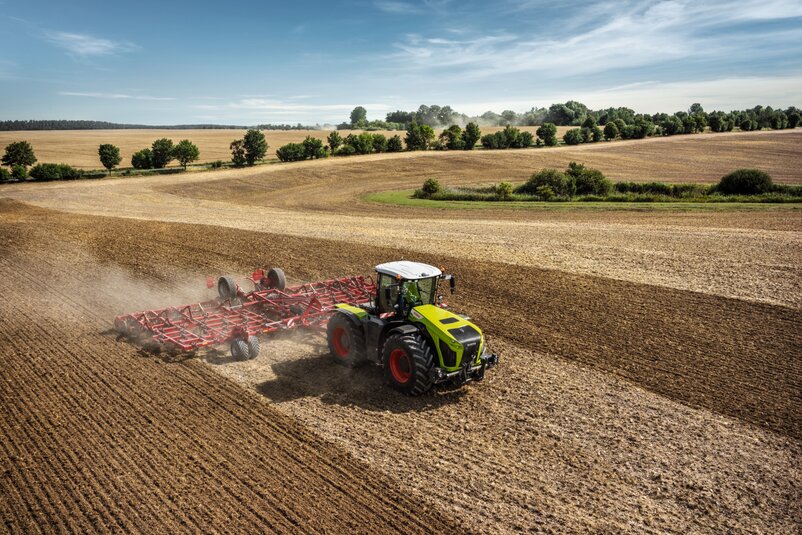Hydraulics: new ways of dealing with pressure
Safim and Fluid-Press, two established names in the hydraulics market, form the core of AL-KO’s hydraulics business segment. How are innovations helping expand their market presence and business? Valeriomarco Montanari, R&D Manager of Hydraulic Business Unit at Safim, provides insights.


The most important points in brief:
- Comprehensive hydraulic solutions: The AL-KO Group offers hydraulic solutions for all kind of braking needs of mobile machinery with the development power of Safim and Fluid-Press, supported by CERMA.
- Customized development and platform strategy: Our experts provide the necessary efficiency and reliability using an intelligent mix of modular standard products and individual components optimized for each vehicle’s respective functions.
- Digital hydraulics: The digitalization of hydraulic systems will open up a completely new level of precision and functionality: a development boost for the automation of this vehicle class.
One principle, many applications
Moving cranes and tractors with ease
Safim builds hydraulic brake systems for off-highway vehicles. Fluid-Press produces hydraulic valves and manifold blocks. The basic principle is always the same: A pump presses hydraulic fluid from a reservoir into the hydraulic circuits, valves control the pressure and flow distribution in the line system, and the fluid power is converted into a piston movement in the cylinder or a shaft rotation in a hydraulic motor. “In the case of Fluid-Press and Safim, it’s how this technical process is applied that makes all the difference,” says Valeriomarco Montanari, R&D Manager at Safim.
“While Fluid-Press can control many functions of tractors, combine harvesters, standard and special cranes, aerial working platforms, shunting vehicles for aircraft, crawler-transporters, excavators, etc. with its hydraulic valves and integrated hydraulic circuits, Safim is the specialist in hydraulic braking systems for these vehicles and moving machines.” It is not only the loads that these machines easily move that are usually measured in tons. The vehicles themselves sometimes weigh as much as a heavy-duty truck as well. The controls and brakes must be correspondingly reliable and precise to avoid accidents or errors.
Custom optimization
Closely coordinated development
Equipped with an entire modular system of valves in different pressure and flow rate classes, the engineers at Fluid-Press achieve made-to-measure vehicle movements. New functions can also be easily designed with this set of components. “Close cooperation with the customer is key,” says Montanari. “Ultimately, the solution must be efficient and uncompromisingly reliable.” This is even more true when it comes to the braking solutions from Safim. The development and approval of new hydraulic brake control systems require many rounds of coordination with their respective customers through up to weekly meetings between the experts.
Reliability is the top priority
Specific design, manufacturing and testing
The development is shaped by test runs. Millions of test cycles are common for such systems. Montanari says: “We develop practically together with our customers. We must understand exactly what challenges the vehicle needs to be able to withstand.” Only then can the braking system deliver optimum performance. To achieve the best possible balance between performance and efficiency, Safim’s master priority valves, for example, are specifically designed for each application. The design of the hydraulic integrated circuits from Fluid-Press also follows the specific customer requirements in detail. These compact valve blocks optimize installation and system maintenance times. In addition, the number of connections can be reduced to a minimum.
Proactively meeting legal requirements
Using regulations as drivers of innovation
Sometimes the European Union plays a crucial role in the search for innovations, too. As part of efforts to minimize road accidents and increase safety, the EU decided in 2013/2015 that agricultural trailers must be equipped with a dual-line braking system. Montanari says: “There were different local regulations and technical solutions across Europe.” From 2025 on, it will be mandatory for EU countries to avoid single-line trailer brake valves on tractors. “Accordingly, we have dual-line systems to fulfill EU requirements for each type of vehicle, while we still have different pure single-line brake valves in our product range for vehicles and countries that still can adopt it.”
Shaping the future
Digitizing hydraulics
Safety and efficiency are the main drivers of innovation for the entire AL-KO VT hydraulics segment. “At the same time, we are seeing a clear trend towards ever more comprehensive automatic functions in agricultural vehicles, construction and material handling machinery. This goes as far as fully automated machines,” says Montanari. That is why Safim presented intelligent functional systems for autonomous braking at Bauma, the world's leading construction machinery trade fair, back in 2022 under the motto “Shaping the future of braking”.
Full brake-by-wire braking systems offer hill descent control systems, traction control, and collision prevention. “The future begins here, together with us,” says Montanari, not without pride. “Development cycles in the hydraulics sector are typically very long. But we are currently witnessing a dramatic acceleration in speed with the transition from pure hydraulics to hybrid electro-hydraulics, and we are right at the forefront.”
The next level of automation
New functions, easier to implement
Digitalization not only enables new functions that make work increasingly safe. It also takes precision and ease of use to a new level. Montanari says: “Digital hydraulics creates opportunities for an ever-higher degree of automation. This accelerates work processes with increasingly simple workflows and ensures increasingly efficient systems.” Last but, not least, the new possibilities also alleviate the shortage of skilled workers. These are the ingredients for a real development boost for the hydraulics market.




